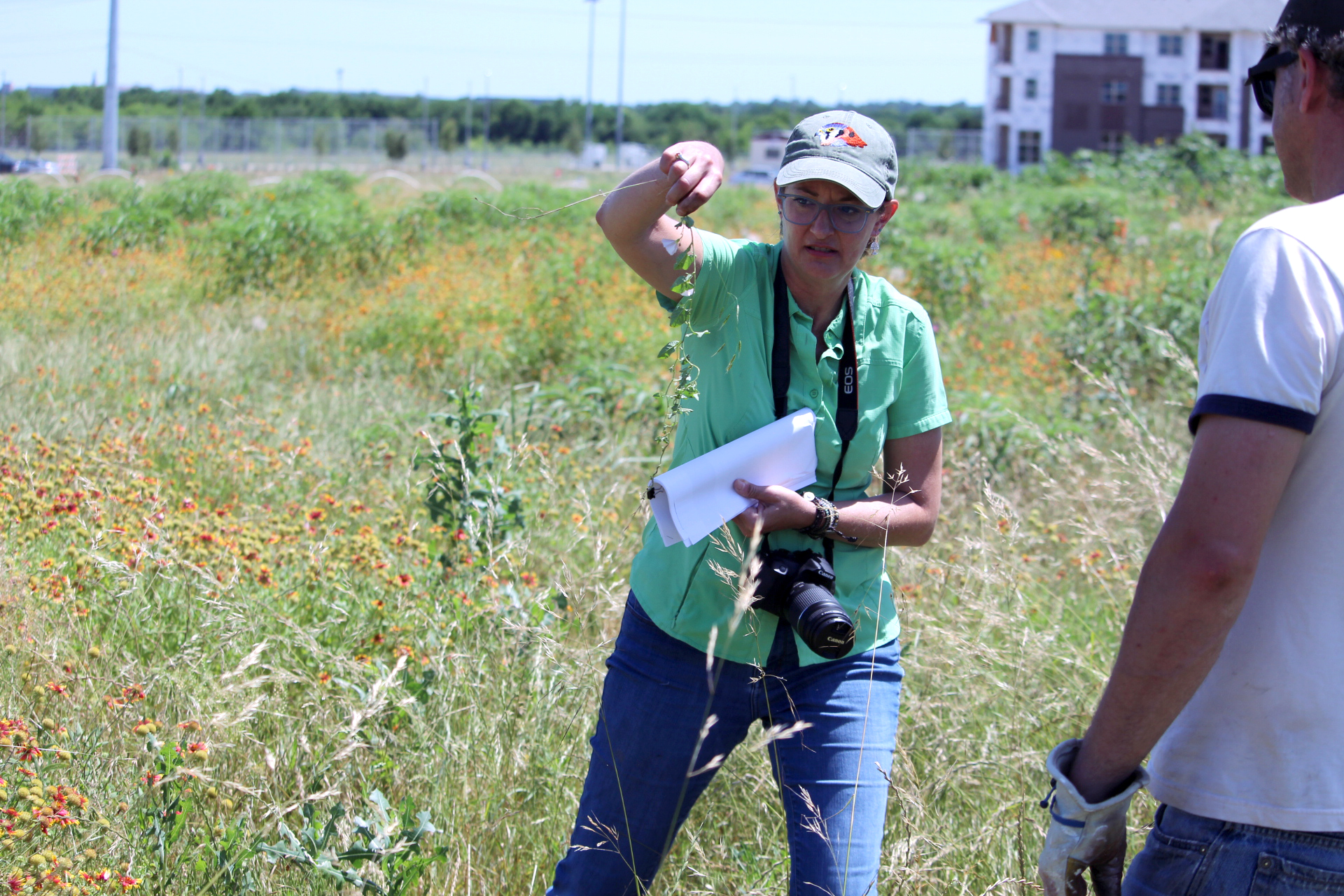DENTON (UNT), Texas — A team of faculty, staff and students at the University of North Texas has reconstructed a native Texas tall grass prairie on a patch of land at Discovery Park.
In the works since 2016, the Pecan Creek Pollinative Prairie increases native plant and animal biodiversity on campus as well as offers outdoor education and volunteer opportunities for UNT students, faculty, staff and members of the community.
With existing prairie plants on-site, Discovery Park provided an ideal location for the prairie, said Jaime Baxter-Slye, an instructional laboratory supervisor in the Department of Biological Sciences.
“The four acres near the pond was a perfect place to build a prairie,” Baxter-Slye said. “The prairie is an ideal way to give students the opportunity to get outside for some hands-on active learning. And it's not just learning, it's training.”
Native Texas tall grass prairie habitats are among the most endangered habitat types in the state. North Central Texas was once home to about 40,000 acres of productive prairie land, filled with more than 2,200 species of native plants. Today, less than 1 percent of prairie ecosystems exist.
Members of the Departments of Biological Sciences and Philosophy and Religion have partnered for the project, as well as the student organizations Strategies for Ecology, Education, Diversity and Sustainability, the Society for Ecological Restoration and Save the Bees. The project is also in association with UNT’s Advanced Environmental Research Institute, Bee Campus USA, Texan by Nature, the Xerces Society Million Pollinator Project and Monarch Wranglers.
In 2016, UNT became the first university in Texas to be designated a Bee Campus USA. Bee Campus USA is a sustainability organization focused on supporting pollinator species populations, which are declining rapidly across the globe.
Additionally, Baxter-Slye has registered the Pollinative Prairie with the American Kestrel Partnership, and built three kestrel boxes to increase the mating potential of the bird, which utilizes grasslands for its habitat. Students monitor the boxes with nest cameras. While not on the endangered species list, kestrels do face a threat as native tall grass prairies decline.
Since the project’s inception, more than 500 students have volunteered over 1,500 hours of their time to the project.
“All you have to do is have an open heart for the environment, and give back however you can,” Baxter-Slye said. “Plant some native plants, pick up trash, conserve water, volunteer with projects, and spread the word.”
The first phase of the project is expected to be completed this fall. It includes the preparation of three acres for planting and seeding, as well as conducting a greenhouse plant growing project to determine the best pot size for transplanting species that do not readily sprout from seed.
Phase II, beginning later this year, will add a tool shed, a pavilion for events and classes and a walking trail featuring educational signage.
In the future, Baxter-Slye plans to hold ecology and environmental science labs for classes and use the space for environmental education and volunteer events. Events will be posted to the UNT Ecology Facebook page.
The Pollinative Prairie project has received funding from UNT’s We Mean Green Fund, which actively solicits environmental sustainability project proposals from members of the UNT community to improve the university.





